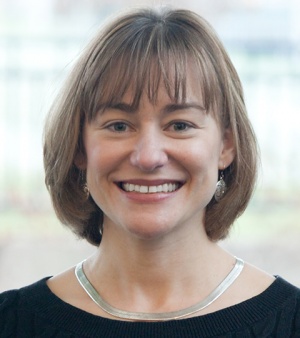CAZypedia celebrates the life of Senior Curator Emeritus Harry Gilbert, a true giant in the field, who passed away in September 2025.
CAZypedia needs your help!
We have many unassigned pages in need of Authors and Responsible Curators. See a page that's out-of-date and just needs a touch-up? - You are also welcome to become a CAZypedian. Here's how.
Scientists at all career stages, including students, are welcome to contribute.
Learn more about CAZypedia's misson here and in this article. Totally new to the CAZy classification? Read this first.
Difference between revisions of "User:Nicole Koropatkin"
| Line 1: | Line 1: | ||
| − | Nicole Koropatkin received her PhD in Biochemistry from the University of Wisconsin in 2004. Trained in structural enzymology in the lab of Hazel Holden, her graduate work focused on the enymes involved in O-antigen deoxysugar biosynthesis in Salmonella typhi. After finishing her training, she moved to the lab of Thomas Smith at the Donald Danforth Plant Science Center in St. Louis. She received an NRSA to determine the structural basis for nitrate and bicarbonate discrimination within the ABC transport systems of Synechocystis PCC 6803. After completing this study, she teamed up with Eric Martens from the Jeffrey Gordon lab at Washington University in St. Louis in order to investigate the structures of the novel proteins encoded within Bacteroidetes polysaccharide utilization loci. In 2009 she moved to the University of Michigan Medical School to continue this work as a Research Asistant Professor. In January 2014, she moved into a tenure-track position as an Assistant Professor in the Microbiology and Immunology department. The Koropatkin lab studies the structural biology of glycan capture by a variety of human gut bacteria. | + | [[Image: Nicole_Dec2016_small.jpg|thumb|widthpx| ]]Nicole Koropatkin received her PhD in Biochemistry from the University of Wisconsin in 2004. Trained in structural enzymology in the lab of Hazel Holden, her graduate work focused on the enymes involved in O-antigen deoxysugar biosynthesis in Salmonella typhi. After finishing her training, she moved to the lab of Thomas Smith at the Donald Danforth Plant Science Center in St. Louis. She received an NRSA to determine the structural basis for nitrate and bicarbonate discrimination within the ABC transport systems of Synechocystis PCC 6803. After completing this study, she teamed up with Eric Martens from the Jeffrey Gordon lab at Washington University in St. Louis in order to investigate the structures of the novel proteins encoded within Bacteroidetes polysaccharide utilization loci. In 2009 she moved to the University of Michigan Medical School to continue this work as a Research Asistant Professor. In January 2014, she moved into a tenure-track position as an Assistant Professor in the Microbiology and Immunology department. The Koropatkin lab studies the structural biology of glycan capture by a variety of human gut bacteria. |
Revision as of 07:45, 23 August 2017
Nicole Koropatkin received her PhD in Biochemistry from the University of Wisconsin in 2004. Trained in structural enzymology in the lab of Hazel Holden, her graduate work focused on the enymes involved in O-antigen deoxysugar biosynthesis in Salmonella typhi. After finishing her training, she moved to the lab of Thomas Smith at the Donald Danforth Plant Science Center in St. Louis. She received an NRSA to determine the structural basis for nitrate and bicarbonate discrimination within the ABC transport systems of Synechocystis PCC 6803. After completing this study, she teamed up with Eric Martens from the Jeffrey Gordon lab at Washington University in St. Louis in order to investigate the structures of the novel proteins encoded within Bacteroidetes polysaccharide utilization loci. In 2009 she moved to the University of Michigan Medical School to continue this work as a Research Asistant Professor. In January 2014, she moved into a tenure-track position as an Assistant Professor in the Microbiology and Immunology department. The Koropatkin lab studies the structural biology of glycan capture by a variety of human gut bacteria.
